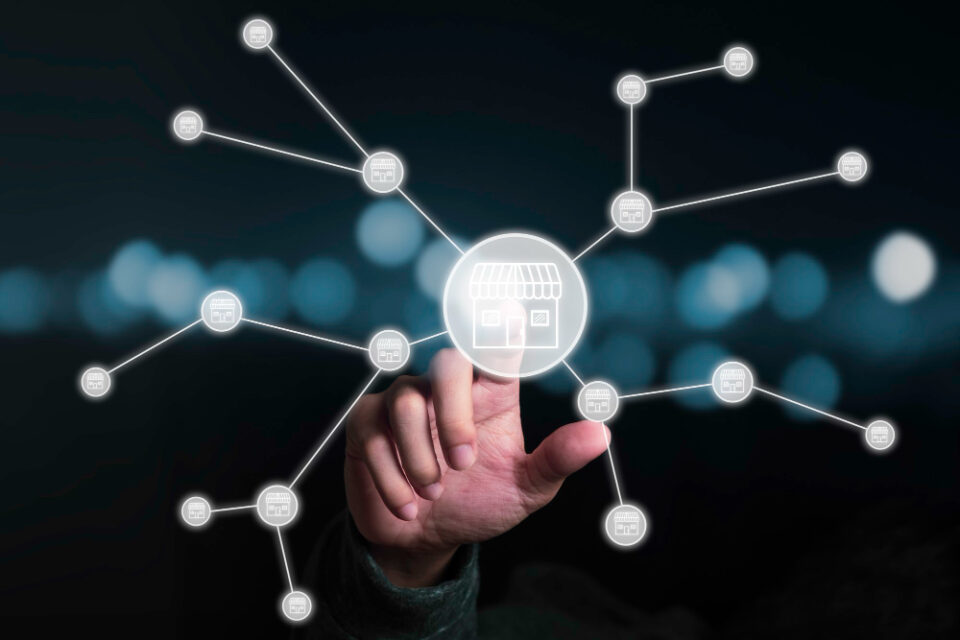In an increasingly connected world, where data is generated at an unprecedented rate, the need for secure data exchange has become paramount. The combination of blockchain and the Internet of Things (IoT) has emerged as a promising solution to address this challenge. Blockchain, known for its decentralized and immutable nature, when coupled with the IoT’s vast network of interconnected devices, presents a powerful framework for secure data exchange. This article explores the potential of blockchain and IoT and how their convergence can revolutionize the way we exchange data in the future.
1. The Rise of IoT and Its Data Security Challenges:
The proliferation of IoT devices has transformed the way we live and work. From smart homes and wearable devices to industrial sensors and autonomous vehicles, IoT has permeated various sectors. However, as the number of interconnected devices grows, so does the vulnerability to security breaches. Centralized data storage and communication models used in traditional IoT architectures are susceptible to hacking, data manipulation, and unauthorized access. This necessitates a robust and secure infrastructure to protect sensitive data.
2. Understanding Blockchain Technology:
Blockchain, the underlying technology behind cryptocurrencies like Bitcoin, is a decentralized and distributed ledger system. It ensures transparency, immutability, and security by storing data across a network of computers rather than a single central authority. Each transaction or data entry is recorded in a “block” and linked together in a “chain,” forming an unalterable record. This decentralized nature makes blockchain highly resistant to tampering and fraud, making it an ideal solution for secure data exchange. hire blockchain developer to develop blockchain based software.
3. Synergies Between Blockchain and IoT:
By integrating blockchain with IoT, we can leverage the strengths of both technologies to create a secure and transparent ecosystem for data exchange. Blockchain can provide a decentralized framework for storing and validating IoT-generated data, while IoT devices can act as a source of real-time data that can be securely recorded and verified on the blockchain. This combination brings unprecedented levels of trust, integrity, and accountability to IoT data, mitigating the risks associated with centralized systems.
4. Enhanced Security and Privacy:
Blockchain technology ensures data integrity by employing cryptographic algorithms to secure the data stored on the ledger. Each transaction is verified by multiple participants in the network, making it nearly impossible for malicious actors to manipulate the data. Moreover, blockchain’s consensus mechanisms, such as proof-of-work or proof-of-stake, add an extra layer of security by requiring consensus from network participants before data is added to the chain. This decentralized validation process enhances data privacy and reduces the reliance on third-party intermediaries.
5. Streamlined Data Monetization:
The convergence of blockchain and IoT opens up new avenues for data monetization. With the secure and transparent nature of blockchain, individuals and organizations can have greater control over their data and choose who can access it. This allows for the development of data marketplaces where data owners can directly sell their data to interested parties, eliminating intermediaries and ensuring fair compensation. Smart contracts, programmable agreements built on blockchain, enable automated and secure transactions, fostering a more efficient data economy.
6. Real-World Applications:
The combination of blockchain and IoT has far-reaching implications across various industries. In supply chain management, blockchain can provide end-to-end traceability and transparency, preventing counterfeiting and ensuring the authenticity of products. In healthcare, IoT devices can securely transmit patient data to blockchain-based electronic health records, facilitating interoperability while maintaining privacy. Smart cities can utilize blockchain to securely manage data from connected infrastructure, optimizing resource allocation and enhancing citizen services. Choose cross platform mobile app development company that can help you to build real world mobile apps.
7. Overcoming Challenges:
Despite the immense potential, blockchain and IoT integration face challenges that need to be addressed. Scalability, interoperability, and energy efficiency are areas that require further innovation. Blockchain consensus mechanisms can be computationally intensive, making them less suitable for resource-constrained IoT devices. However, ongoing research and development are working towards addressing these challenges to unlock the full potential of blockchain and IoT collaboration.
Conclusion
Blockchain and IoT represent a transformative combination that can revolutionize the way we exchange and secure data. By leveraging the decentralized and immutable nature of blockchain and the vast network of interconnected devices in the IoT, we can establish a trustworthy and transparent infrastructure for secure data exchange. As the technology continues to evolve, we can expect to witness the widespread adoption of this powerful synergy, paving the way for a more secure, efficient, and decentralized future. Consider hiring custom blockchain development company to develop secured and scalable blockchain based web application.

